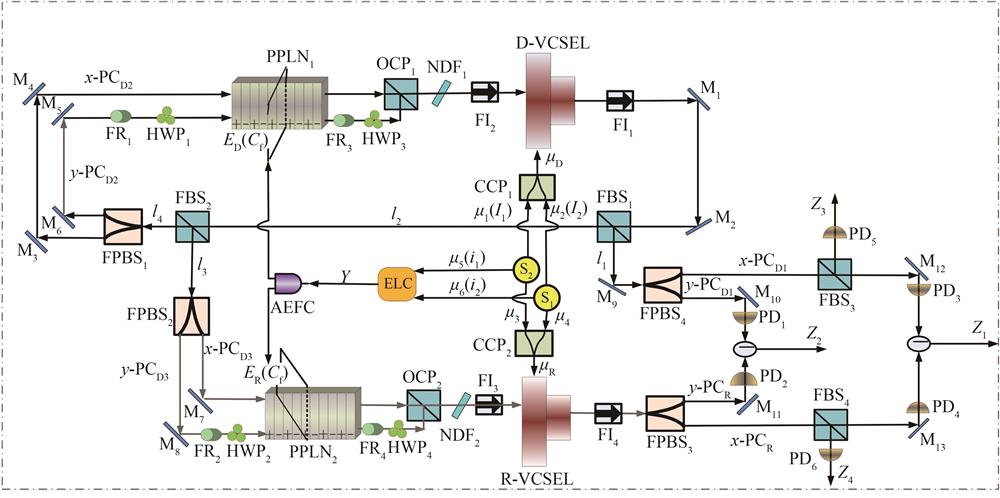Fig. 1. The setup for chaotic system of drive-response VCSELs
Fig. 2. Dynamic state evolutions of polarized light x-PCD1,y-PCD1,x-PCR and y-PCR in the parameter space ED and μD
Fig. 3. Dynamic evolutions of the correlation function within the parameter space of the applied electric field and the normalized injection current
Fig. 4. The evolution curves of the correlation function with the change of the normalized injection current when the applied electric field is 0.434 3 kV/mm,0.583 kV/mm,0.73 kV/mm and 1 kV/mm
Fig. 5. Reconfigurable and storable chaotic logic OR,NAND,AND,XNOR,XOR and NOR operations
Fig. 6. Effect of noise strength D=1×109 on logic outputs Z1,Z2,Z3 and Z4
Fig. 7. Effect of noise strength D=1.77×109 on logic outputs Z1,Z2,Z3and Z4
Fig. 8. Effect of noise strength D=1.84×109 on logic outputs Z1,Z2,Z3 and Z4
Fig. 9. Effect of noise strength D=1.89×109 on logic outputs Z1,Z2,Z3 and Z4
Fig. 10. The evolution of the success probability P with the time delay τc
| Parameters | Value | Parameters | Value |
|---|
| Line-width enhancement factor a | 3 | Duty ratio R | 0.5 | | field decay rate k | 300 | Polar angle θ/π | 1/2 | | Spin relaxation rate γs/ns-1 | 50 | Azimuth φ/(o) | 0 | | Nonradiative carrier relaxation γe/ns-1 | 1 | The noise strength D | 108 | | Dichroism γa /ns-1 | -0.1 | Poled period of crystal Λ/m-1 | 5.8×105 | | Birefringence γp /ns-1 | 2 | Crystal length L/mm | 15 | | Delay time τ/ns | 2 | Refractive index of o-light n1 | 2.24 | | Delay time τc/ns | 5 | Refractive index of e-light n2 | 2.17 | | Bit duration time/ns | 10 | Differential material gain g/(s·m-3) | 2.9×10-12 | | Effective area of light spot SA/μm2 | 38.485 | wave length λ0/nm | 1 550 | | Length of the laser cavity LV/μm | 10 | Field confinement factor to the active region Г | 0.05 | | Effective refractive index of active layer ng | 3.6 | Optical feedback strength kf/ns-1 | 1.13 | | Volume of the active layer V/μm3 | 384.85 | Optical injection strength kinj/ns-1 | 1.13 |
|
Table 1. Main system parameters
| Logic operations | (I1,I2)=(0,0) | (I1,I2)=(0,1)/(1,0) | (I1,I2)=(1,1) |
|---|
| Cf | ADx,ARx | Cf | ADx,ARx | Cf | ADx,ARx |
|---|
| Cf=I1·I2 | 0 | ADxmax=1.1×10-4 ARxmax=1.0×10-4 | 0 | ADxmax=0.002 ARxmax=0.002 | 1 | ADxmin=0.028 ARxmin=0.025 | | 1 | ADxmin=0.029 ARxmin=0.038 | 1 | ADxmin=0.027 ARxmin=0.024 | 0 | ADxmax=7.5×10-4 ARxmax=0.003 | | Cf=I1+I2 | 0 | ADxmax=2.5×10-4 ARxmax=0.003 3 | 1 | ADxmin=0.027 ARxmin=0.022 | 1 | ADxmin=0.028 ARxmin=0.033 | | 1 | ADxmin=0.029 ARxmin=0.028 | 0 | ADxmax=1.07×10-4 ARxmax=0.006 4 | 0 | ADxmax=1.1×10-4 ARxmax=1.0×10-4 | | Cf=I1⊕I2 | 0 | ADxmax=5.3×10-4 ARxmax=0.003 | 1 | ADxmin=0.029 ARxmin=0.024 | 0 | ADxmax=6.2×10-4 ARxmax=0.004 | | Cf=I1⊙I2 | 1 | ADxmin=0.029 ARxmin=0.028 | 0 | ADxmax=0.002 ARxmax=0.005 | 1 | ADxmin=0.029 ARxmin=0.028 |
|
Table 2. Maximum of the mean values of IDx(t)and IRx(t)for Cf=0 and minimum of the mean values of IDx(t)and IRx(t)for Cf=1 for different logic operations that Cf and the logic inputs satisfy
| Logic operations | (I1,I2)=(0,0) | (I1,I2)=(0,1)/(1,0) | (I1,I2)=(1,1) |
|---|
| Cf | Mx,My | Cf | Mx,My | Cf | Mx,My |
|---|
| Cf=I1·I2 | 0 | Mxmax=2.67×10-5 Mymax=3.75×10-4 | 0 | Mxmax=2.15×10-4 Mymax=1.46×10-4 | 1 | Mxmin=0.001 7 Mymin=0.001 4 | | 1 | Mxmin=0.002 5 Mymin=0.001 3 | 1 | Mxmin=0.001 7 Mymin=0.003 | 0 | Mxmax=4.13×10-5 Mymax=5.38×10-4 | | Cf=I1+I2 | 0 | Mxmax=1.35×10-4 Mymax=1.01×10-4 | 1 | Mxmin=0.002 5 Mymin=0.002 6 | 1 | Mxmin=7.75×10-4 Mymin=0.002 1 | | 1 | Mxmin=0.001 3 Mymin=0.001 9 | 0 | Mxmax=1.58×10-4 Mymax=5.91×10-5 | 0 | Mxmax=7.26×10-5 Mymax=1.48×10-5 | | Cf=I1⊕I2 | 0 | Mxmax=1.36×10-5 Mymax=2.08×10-5 | 1 | Mxmin=0.002 9 Mymin=0.002 6 | 0 | Mxmax=1.4×10-5 Mymax=1.77×10-5 | | Cf=I1⊙I2 | 1 | Mxmin=9.99×10-4 Mymin=0.002 | 0 | Mxmax=4.34×10-5 Mymax=1.01×10-4 | 1 | Mxmin=9.92×10-4 Mymin=0.001 6 |
|
Table 3. Maximum of the mean square errors of SEx and SEywhen Cf=0 and minimum of the mean square errors of SEx and SEy when Cf=1 for different logic operations that Cf and the logic inputs satisfy





